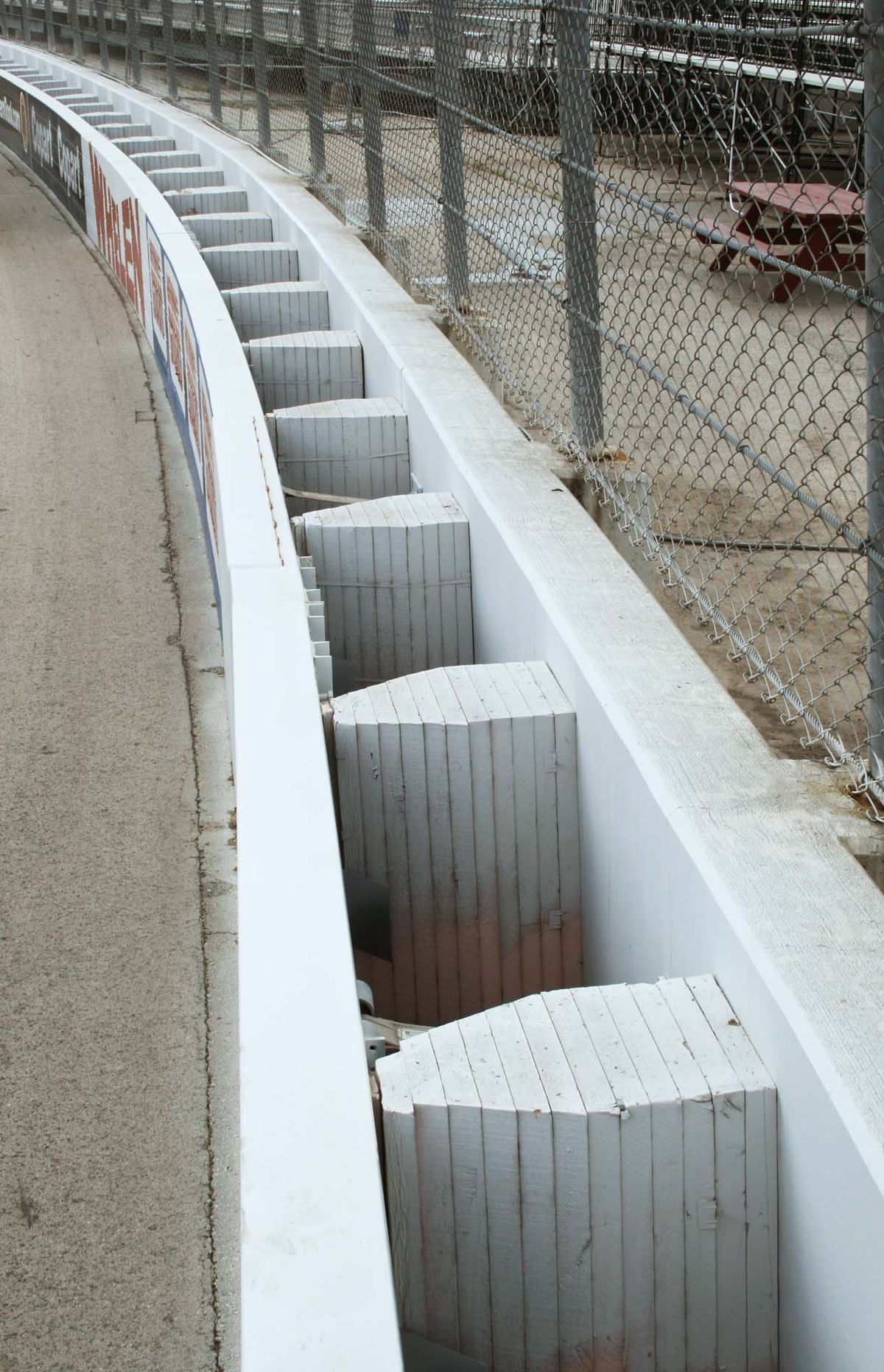mikebcurve
Nitro Member
I thought SAFER barriers were mostly steel. The car impacts the steel, not blocks of foam. The steel deforms to absorb energy but the car isn’t going to get stuck in the steel barrier.I don't know.... we all see what a little foam block can do to a 330mph fueler when it gets hit at speed, so would crashing into a wall that can give at those speeds cause a quicksand like grabbing effect instead of redirecting the G's of the impact?
I thought SAFER barriers were mostly steel. The car impacts the steel, not blocks of foam. The steel deforms to absorb energy but the car isn’t going to get stuck in the steel barrier.

You have some sketches of "a different way" to propose?If there were no body tethers (or they were configured in a different way) we wouldn't even be having this discussion.
Fix the quick and cheap stuff first, budget for SAFER barriers later.
Is there a prerequisite to have sketches to say there is a different way?You have some sketches of "a different way" to propose?
I don't mean for this to sound sarcastic...but which wall/impact? He hit both of them. The most impactful, one would think, was the first one on his left side basically a full side impact. Then he went back across and hit the other wall more on the front. I guess it's certainly possible the engine explosion could have caused it, but in my opinion (not in the profession), the first hit had to be the one.Do we know that John's injuries came from hitting the barrier?
Do we know that John's injuries came from hitting the barrier?
You could be right. I don't know. I have just seen people coming to the immediate conclusion that safer barriers would have prevented his injuries. Drivers have had TBI without hitting a barrier or wall. I would only like to know if anyone knows the cause before we start jumping to conclusions.I don't mean for this to sound sarcastic...but which wall/impact? He hit both of them. The most impactful, one would think, was the first one on his left side basically a full side impact. Then he went back across and hit the other wall more on the front. I guess it's certainly possible the engine explosion could have caused it, but in my opinion (not in the profession), the first hit had to be the one.
No one is saying they aren't the problem. I'm saying, personally, as a racer, it's the better of two problems and if I had the chance to drive big show aa/fc, I'd still strap in knowing the risk, and id say it's silly to remove them without a better solution to the issue they are meant to address. You act/make it sound (at least to me) like it's something people haven't been trying to figure out a better solution to before now, like it's some simple and obvious decision that should've been made years ago.Is there a prerequisite to have sketches to say there is a different way?
I mean...if your threshold is that something must be documented in order to have an opinion then show me the financial plan to implement SAFER barriers on every drag strip.
Obviously I'm not the only one who thinks the tethers are the problem: https://dragillustrated.com/matt-ha...mo-media-podcast-in-wake-of-john-force-crash/. Johnny Gray complained about them back in 2013, that's over 10 years NHRA has had to find a better solution.
